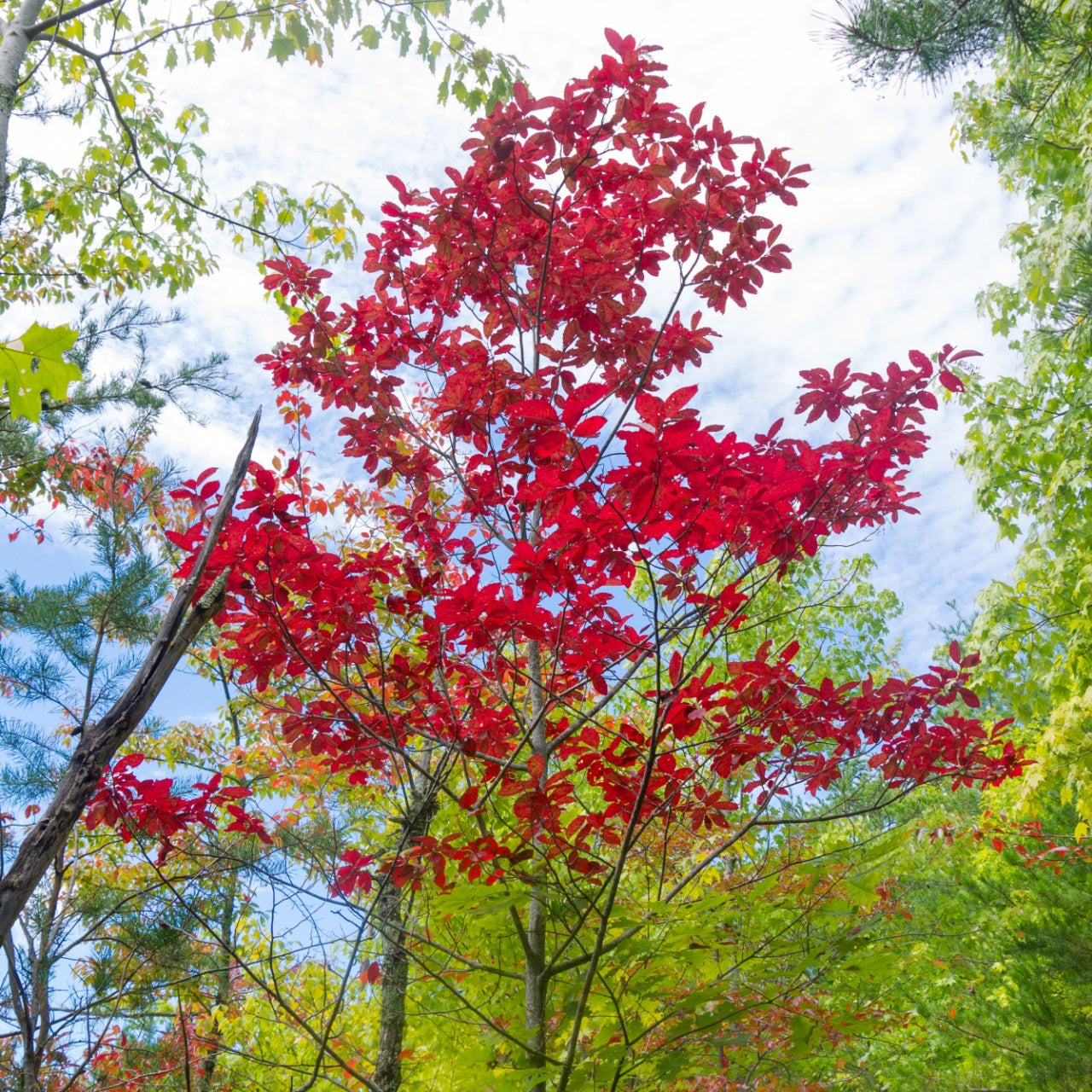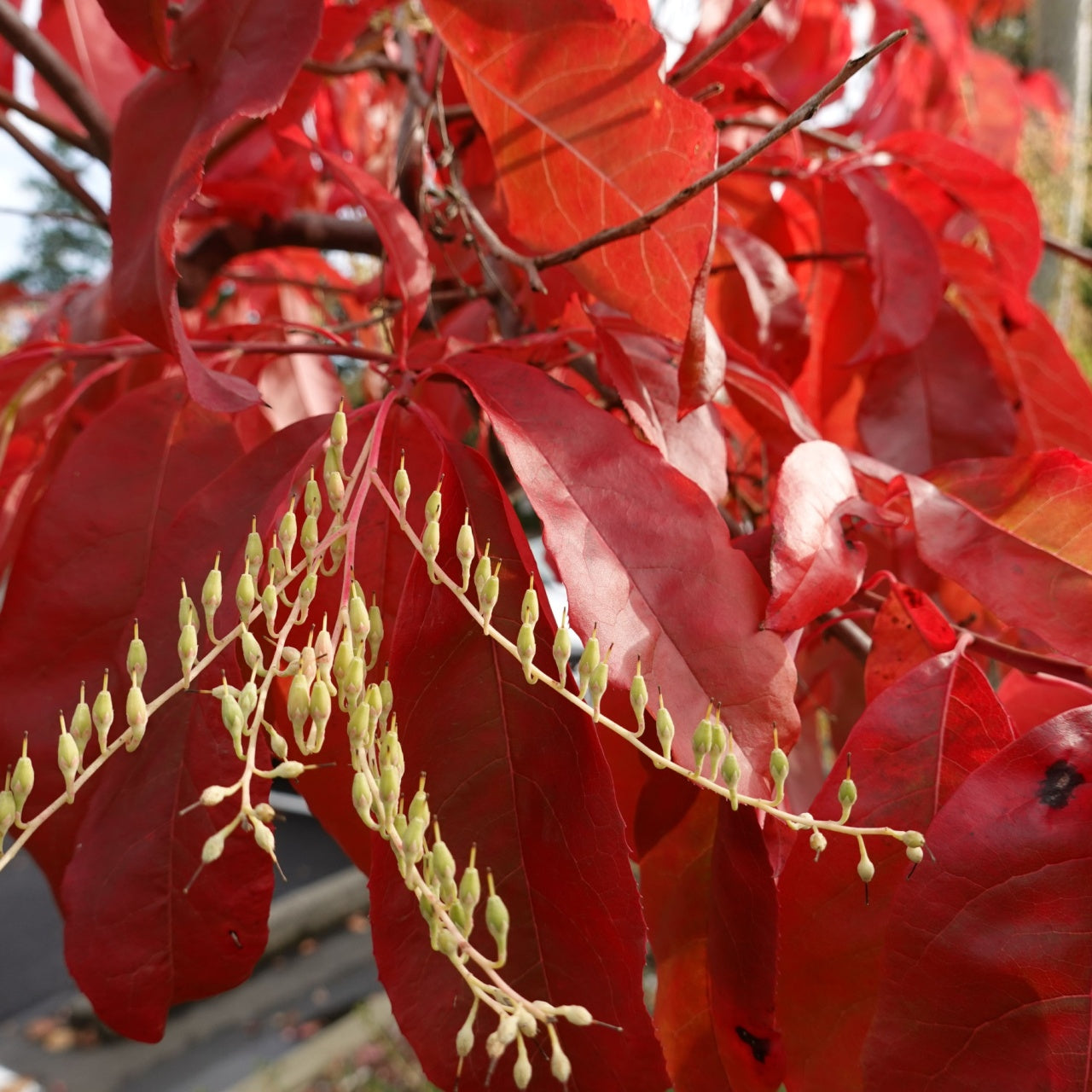Sourwood Trees
Sourwood Trees
Couldn't load pickup availability
Exposure
Sun or ShadeHeight at Maturity
Over 25 FeetUsage
Vibrant FoliageShipped As
Bare-rootShips
Nov 20th through April 28th (Dormant Season)Planting Zones
5-9Sourwood Trees
Sourwood trees flowers attract bees that produce light to medium-colored honey, which is popular in the South. This type, or Oxydendrum arboretum, is a medium-sized deciduous tree native to the Eastern and Southeastern United States. You can find them from the coast of Virginia to North Carolina, over into Southern Ohio and Indiana, and down to Mississippi and Louisiana.
The Sourwood Trees Are A Slow Grower
It has a slow growth rate, reaches a height of 25-30 feet, and can take 12-15 years to reach a height of just 15 feet. It has a rounded top and drooping branches, making it appear graceful. Robbinsville, NC, is home to the most massive known Sourwood tree, with a height of 118 feet and a trunk that is 2 feet wide.
The Tree Loves Sun Shine
While it will do well in full sun or partial shade, its flowers and fall color do best in full sun. It is sensitive to root disturbance and dry, compacted soil. The bark is a grayish-brown color tinged with red and features thick, scaly ridges. Its lumber is used for tool handles and, at one time, was used in wagon sled runners.
It Has Stunning Glossy Foliage
It has dark green, glossy leaves that are oblong. The sheets measure 3 to 8 inches long and taper off into a point. In early summer, it blooms with small, white, bell-shaped flowers about a quarter-inch in size that grow at the end of the branches. The flowers give way to small, brown fruit clusters that resemble tassels. In the fall, the leaves turn an intense red, purplish-red, or sometimes yellow, making this type a real showstopper.
These lovely types acquire their magnificence during the mid-year warmth months.
Unlike numerous others, these only sprout once the warmth of summer. The tree sprout is vast and white, coming in little bunches. These tiny sprouts are fragrant and go with the dark green clears out.
The Tree Turns Stunning Colors In The Fall
These transform into red, yellow, and orange reference points in the fall, looking like living flames. Likewise, they deliver tiny dim seeds that flying creatures can eat, providing a winter sustenance source. The Sourwood trees develop as high as thirty feet but remain little.
Share



The trees look excellent - robust and healthy. There is a problem, however, with the packaging. The material provided to keep the roots moist was not fastened around them well enough and had allowed the roots of some trees to become completely dry.
We are planting them anyway and hope for the best, but it is a shame that such healthy, vigorous trees are not shipped with a similar care as is taken in growing them!
This tree is most observable during the warmer months of the year. Bees gather around, one of its big attractions.
They are absolutely beautiful they have white tassel blooms and purple leaves in the fall very exotic and majestic
This is a wonderful addition to our yard. Looks great where I planted it.



